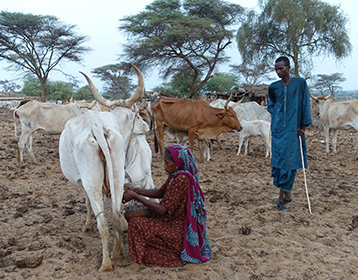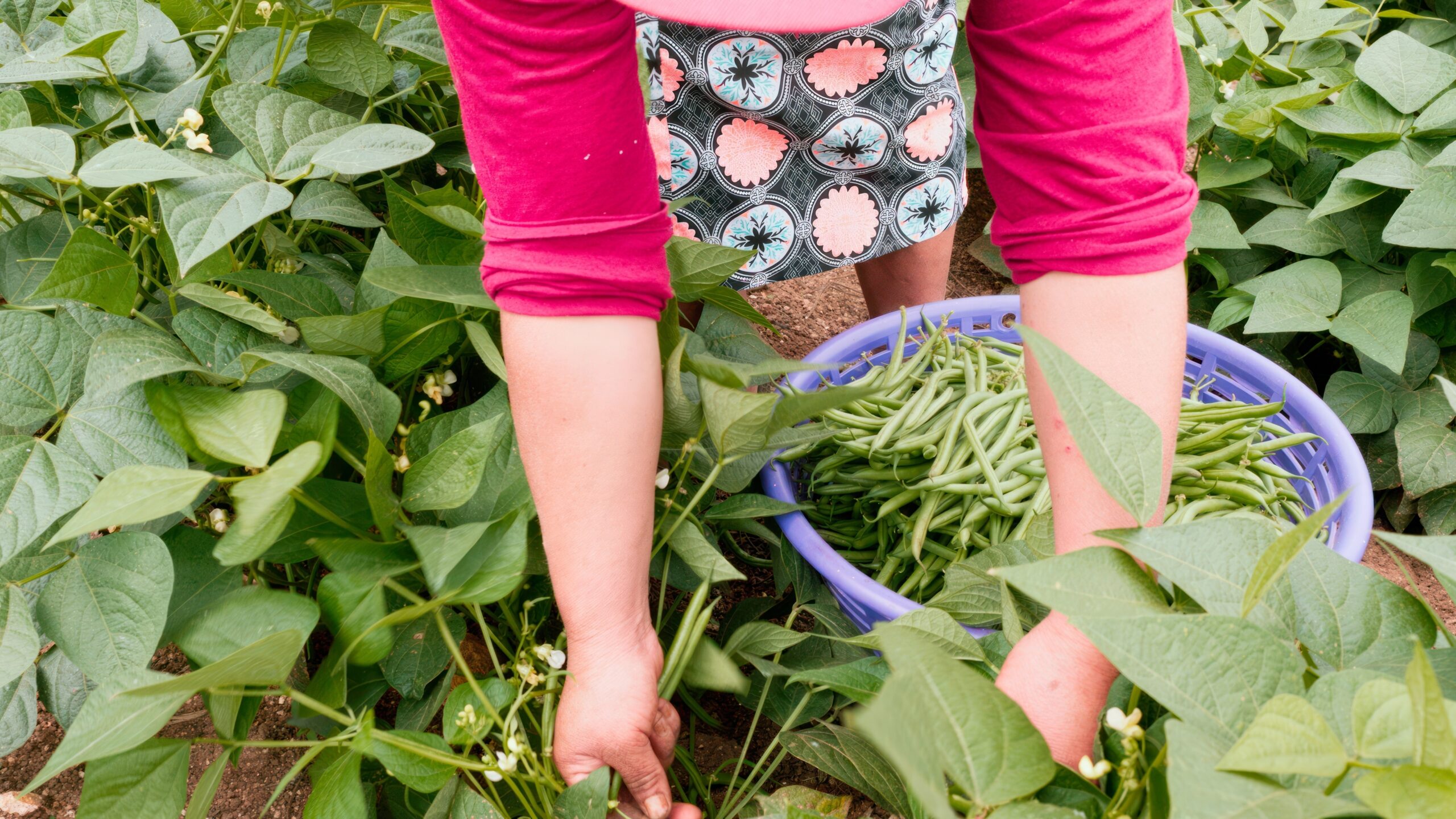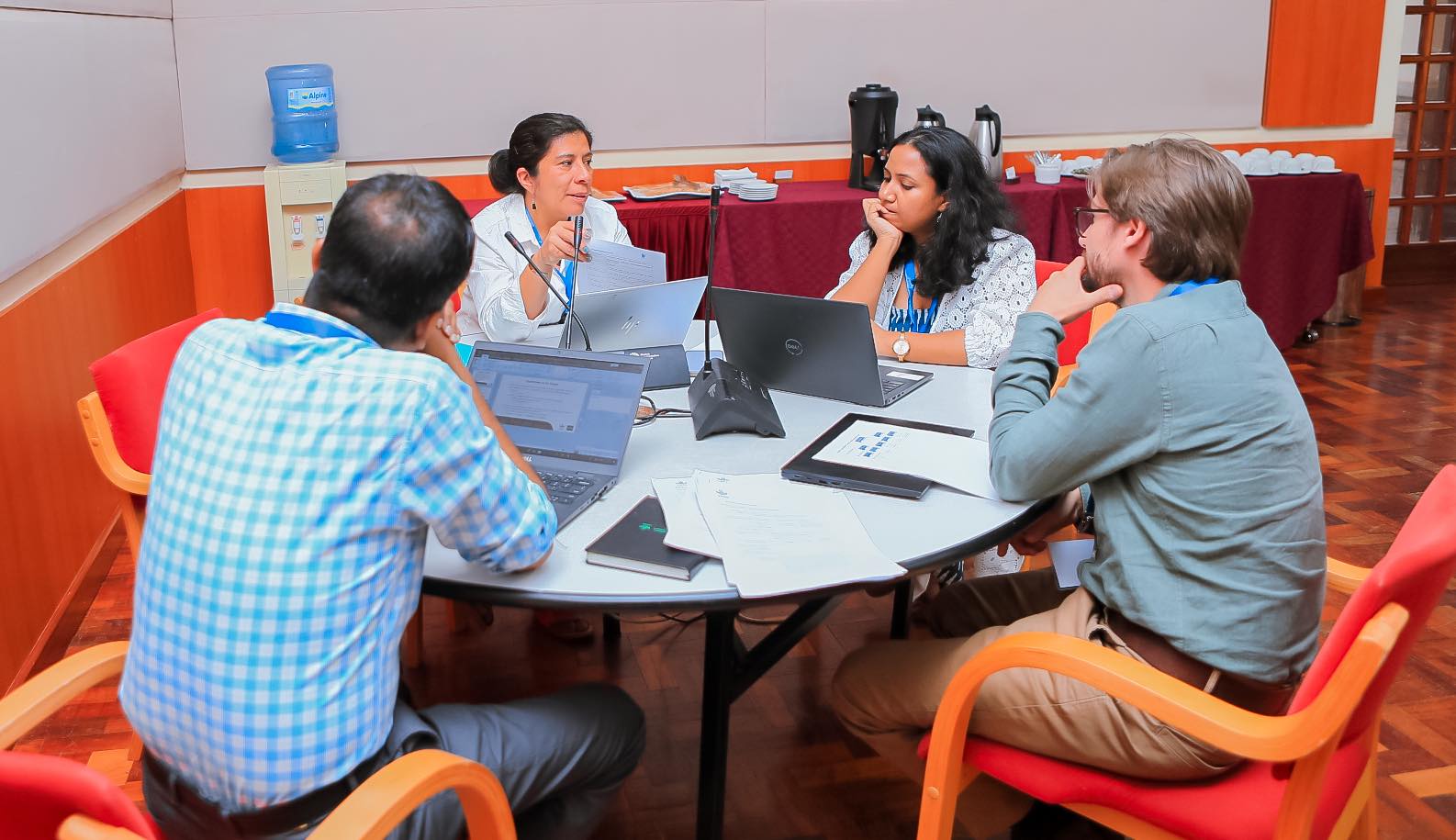The following blog story was originally posted on the CGIAR Research Program on Agriculture for Nutrition and Health (A4NH) blog.
This month on the Gender-Nutrition Idea Exchange, IFPRI Research Fellows Melissa Hidrobo, Tanguy Bernard, Rahul Rawat, and Agnes Le Port relate findings on how contract design can influence nutrition and milk production, mediated by intrahousehold gender dynamics. Designing an experimental incentive contract, the team measured the contract’s impact on child nutrition outcomes as well as regularity of milk delivery. Decision-making power, associated with who is in charge of the contract, proves to be an important factor in a household’s response to the incentives.
In 2011 we began working with La Laiterie du Berger (LDB) – a milk processing company in Northern Senegal – with the goal of improving contractual terms and agreements in a nutrition-sensitive value chain. LDB buys milk from small semi-nomadic farmers, processes it, and sells it as yogurt in urban markets.
Like many contract farming schemes, two things became apparent when we started working in Northern Senegal: 1) LDB faces many challenges associated with high milk collection costs and irregular supply, especially during the dry season, when farmers tend to migrate to look for pasture; and 2) milking, which was traditionally a byproduct of meat production and in the domain of women, was becoming more commercialized and dominated by men. In our particular context, women were still in charge of daily milking but men controlled the contracts with LDB and were the recipients of the monthly payments from LDB.
Faced with these realities, we sought to design an intervention that helped to create a more incentive compatible and sustaining contract between buyer and farmer, and one that directly targeted women. Moreover, with the high rates of anemia in the zone, 76 percent for children 6-59 months (DHS 2011), we wanted to improve children’s nutritional status using the logistics of the value chain to reach a remote and vulnerable population.
Thus in collaboration with LDB and GRET – a French NGO – we designed an incentive contract whereby farmers were rewarded for regularity of milk delivery with a micronutrient fortified yogurt produced by LDB, targeted to farmer’s children, and delivered at collection points easily accessible to women. The specifics of the contract were the following: if a farmer delivered .3L of milk/cow/day for 5 days in a week, he/she was rewarded with a daily micronutrient fortified yogurt – “Thiakry” – for each child 2-5 years old, the following week, in addition to the regular payment for the milk supply.
Design and Results
The study was designed as a 1 year randomized control trial, whereby all farmers signed the contract committing to delivering .3L of milk/cow/day, but only those in the treatment group received the “Thiakry” incentive if they fulfilled the contract. We observe impacts in children’s nutritional status, as well as in the regularity of milk supply. Results show a large and significant impact on children’s hemoglobin levels, especially for boys. Additionally, impacts were observed on the regularity of milk delivery during the dry season, when milk supply is traditionally more irregular.
Moreover, results show that impacts are concentrated in households where the woman is in charge of the contract with LDB. The fact that women who are in charge of the contract responded strongly to the incentive is not surprising given that the incentive targeted women by delivering at collection points easily accessible to them, and women tend to spend more than men on “child-friendly goods” (Quisumbing and Maluccio, 2000; Thomas, 1993, 1990). However, the surprising result is that women in households where men are in charge of the contract did not respond to the incentive, or at least we do not detect any changes in their milk production or delivery.
There are various hypotheses for why women in households where males are in charge of the contract did not respond, touching on several different aspects of empowerment. One hypothesis is that women in households where men are in charge of the contract did not know the details of the incentive contract, and therefore did not respond. Alternatively, maybe they did know the details, but they did not have enough decision-making power to respond.
We find some supporting evidence for the alternative. In particular, the main mechanism through which milk delivery improved during the dry season was based on the decision of keeping more cows in the area to be milked as opposed to going on migration. In general, women who are in charge of the milk contract have more decision-making power over milk production than those women not in charge of the contract. Moreover we find that female decision-making with respect to cow migration increased as a result of the incentive, with larger impacts (although not significant) for households where women are in charge of the contract.
Phase II study
The interesting intrahousehold dynamics observed in the first year of the study led us to continue the study for another year, with a focus on gender roles, cooperation within the household, and implications for production efficiency. In addition to the thiakry incentive, trainings for women on production and herd management are being implemented in order to increase their knowledge and involvement in all stages of milk production and delivery. The study is still ongoing (with an endline scheduled for November 2015), so be on the lookout for some interesting results in the next year!
References and Further Reading:
Koczberski, G., 2007. Loose Fruit Mamas: Creating Incentives for Smallholder Women in Oil Palm Production in Papua New Guinea. World Dev. 35, 1172–1185.
McPeak, J., Doss, C., 2006. Are household production decisions cooperative ? Evidence on pastoral migration and milk sales from northern Kenya. Am. J. Agric. Econ. 88, 525–541.
Minot, N., Sawyer, B., 2014. Contract farming in developing countries: Review of the evidence. Washington, D.C.
Quisumbing, A.R., Maluccio, J. a, 2000. Intrahousehold Allocation and Gender Relations: New Empirical Evidence from Four Developing Countries, FCND Discussion Paper.
Quisumbing, A.R., Roy, S., 2014. Assets , Decisionmaking , and Time Use : The Gendered Impacts of a Dairy Value-Chain Project in Rural Bangladesh.
Saenger, C., Qaim, M., Torero, M., Viceisza, A., 2013. Contract farming and smallholder incentives to produce high quality: Experimental evidence from the Vietnamese dairy sector. Agric. Econ. 44, 297–308. doi:10.1111/agec.12012
Thomas, D., 1993. The Distribution of Income and Expenditure within the Household. Ann. Econ. Stat. 29, 109–136.
Thomas, D., 1990. Intrahousehold Resource Allocation: An Inferential Approach. J. Hum. Resour. 25, 635–664.







